Eumachia: A Remarkable Woman of Ancient Pompeii
Lindsey HallA Woman of Substance
We rarely hear much about independently successful and capable women in antiquity, but Eumachia is a striking exception. She was both an entrepreneur and a priestess in Pompeii, a woman of considerable wealth who rose to become the matron of a prominent city guild and ultimately funded one of the largest buildings in the city forum. Her story is revealed primarily through an inscription on that very building: a lasting testament to her generosity and civic pride.
The white marble statue that bears her likeness, now housed in the Naples Archaeological Museum following its recovery from Pompeii’s ruins, presents a woman wearing a palla draped elegantly over a tunic and stola, styled in the Hellenistic manner. Remarkably, traces of pigment are still visible in her hair, offering a tantalising glimpse of how vividly coloured these ancient sculptures once were.
The Building That Bears Her Name
The structure archaeologists have named the Building of Eumachia was one of the most impressive in Pompeii’s forum. This was far more than a vanity project; it was a substantial public work designed to serve the community’s needs. The building likely functioned as the headquarters for the fullers’ guild, the cloth workers and dyers who formed one of Pompeii’s most important trade associations. While scholars continue to debate its precise function, what remains undisputed is the building’s scale and significance to the city’s commercial life.
The dedicatory inscription that immortalised Eumachia’s name tells us much about her status and affiliations. It identifies her not only as the building’s benefactor but also as a public priestess with connections to the imperial family. This dual role — as both a religious figure and civic patron — illustrates how women like Eumachia could wield considerable influence, even within a society that placed formal restrictions on their public roles.
Navigating Roman Society
Eumachia’s success is all the more remarkable when we consider the constraints that typically limited women’s roles in Roman public life. Women could not hold political office or vote, yet Eumachia found ways to exercise substantial public influence through her wealth, religious position, and strategic patronage. Her story reflects a sophisticated understanding of how to navigate the informal networks of power that operated alongside Rome’s official structures.
Her association with the fullers’ guild was particularly noteworthy. These were not merely ceremonial ties: the guild members evidently held her in great esteem, as they later dedicated her funerary inscription at the Nocera Necropolis, honouring her in death as they had in life. This suggests relationships rooted in mutual respect and benefit, rather than one-sided patronage from above.
The Mercy of Not Knowing
We do not know exactly when Eumachia lived, but the building she funded was constructed during the reign of Emperor Tiberius (AD 14–37), placing her life in the early first century AD. Her tomb at the Nocera Necropolis indicates that she did not live to see the catastrophic eruption of Mount Vesuvius in AD 79, which obliterated Pompeii and entombed its people beneath layers of ash and pumice.
In a way, this timing represents both tragedy and mercy. Eumachia never witnessed the destruction of the city and community to which she was clearly devoted, nor saw her magnificent building reduced to ruins. She was spared the terror of that final day, when the mountain she had lived beneath turned deadly. Yet she also never saw how her legacy would endure — preserved, ironically, by the very volcanic ash that consumed the city she helped shape.
A Legacy in Marble
Today, visitors to Pompeii can see a modern replica of Eumachia’s statue standing within the ruins of her building, while the original is preserved in the safety of the Naples Archaeological Museum. Both serve as powerful reminders of this extraordinary woman’s impact on her city. Her story challenges modern assumptions about the limitations of women in the ancient world and demonstrates that even within restrictive systems, exceptional individuals could find ways to leave a lasting mark.
Eumachia represents something precious and often overlooked in classical history: the voice and agency of women who refused to remain passive observers of their time. Through entrepreneurship, religious service, and civic generosity, she carved out a meaningful and enduring role in the public life of Pompeii.
Picture taken March 2024 at the Naples Archaeological Museum
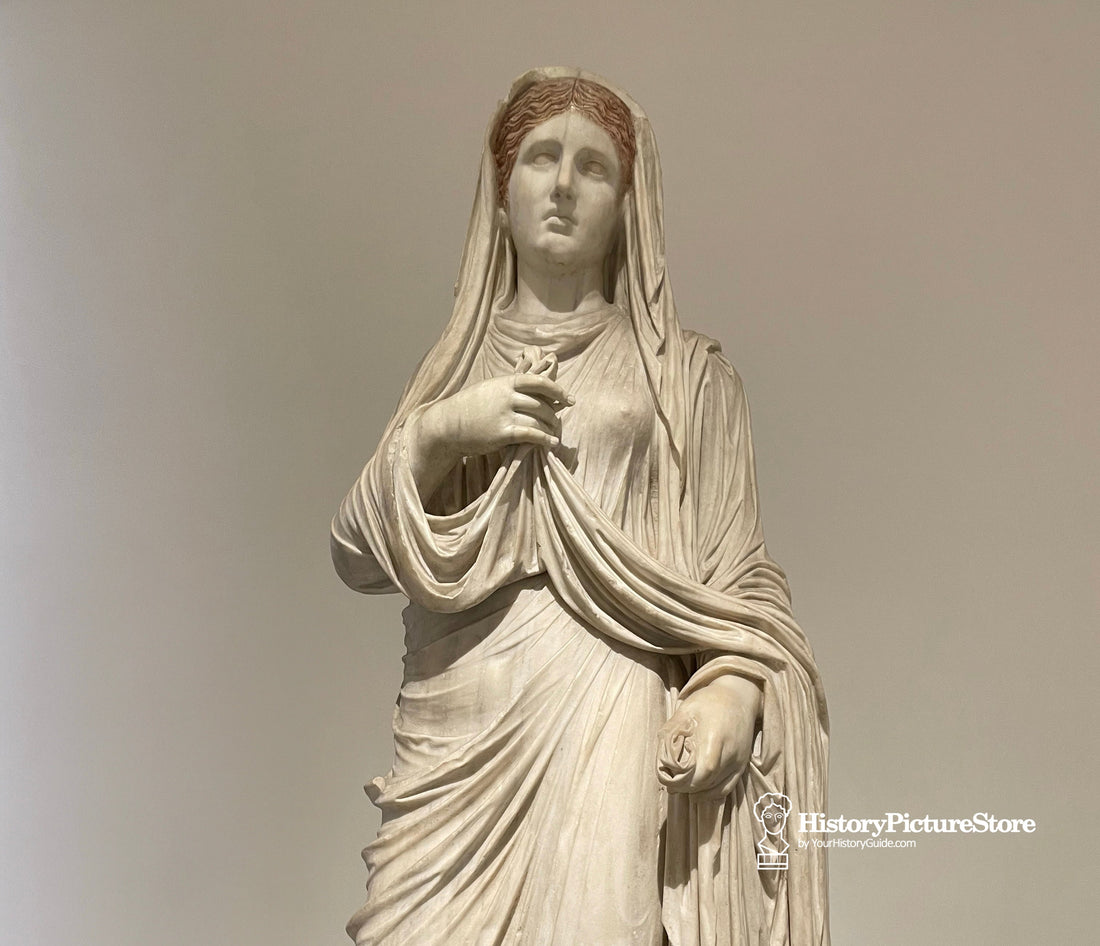

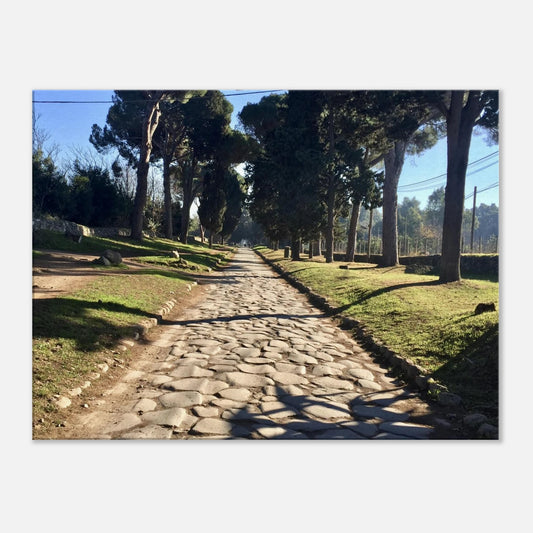
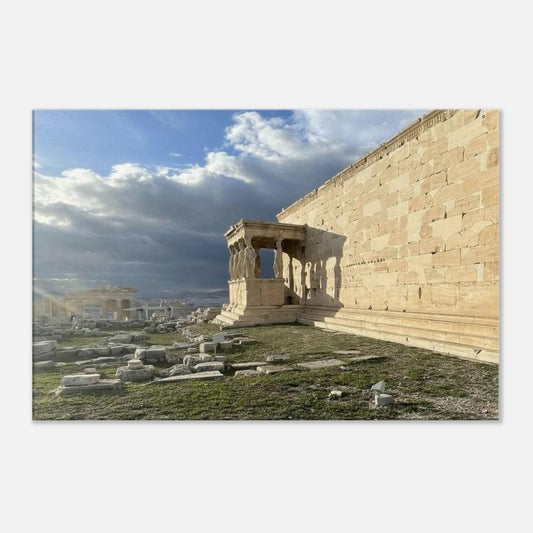


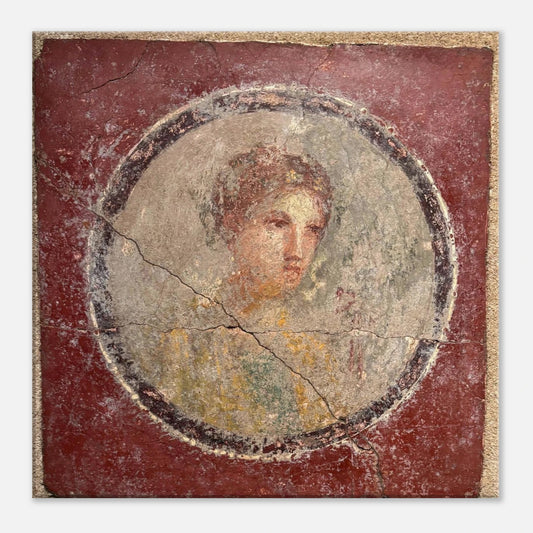
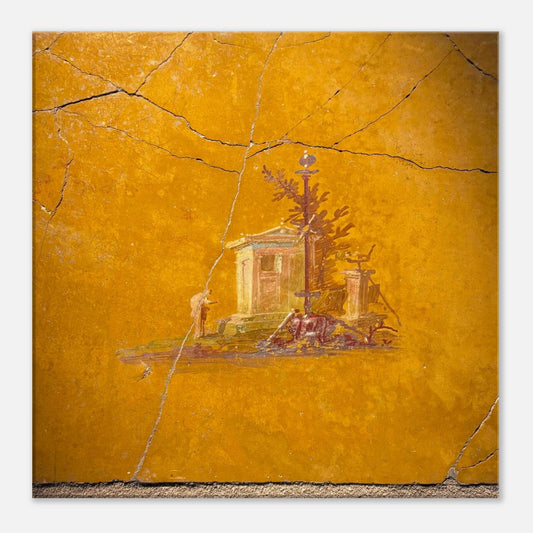
1 comment
I have byen looking for this since 1990